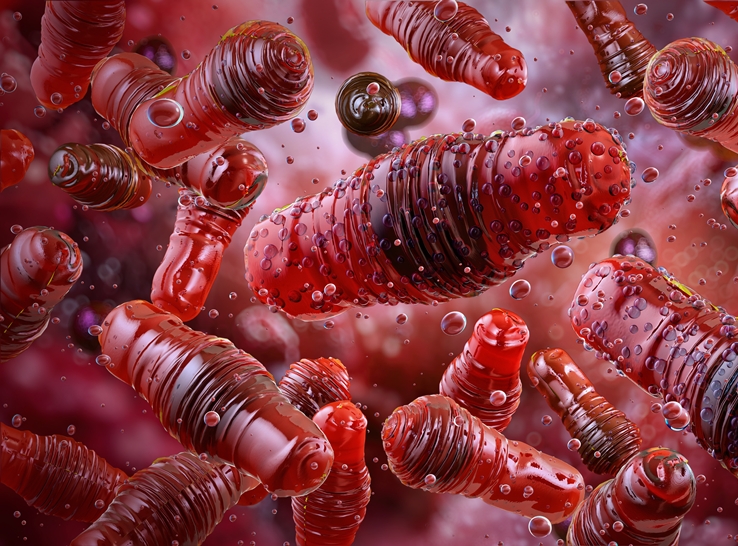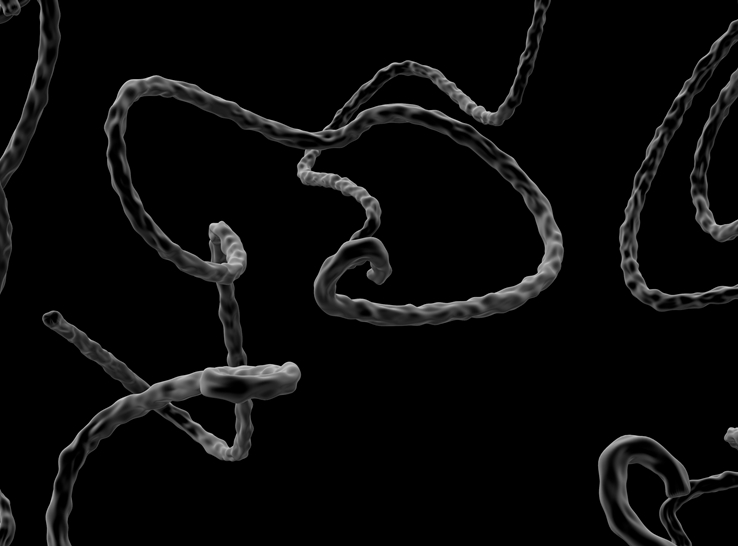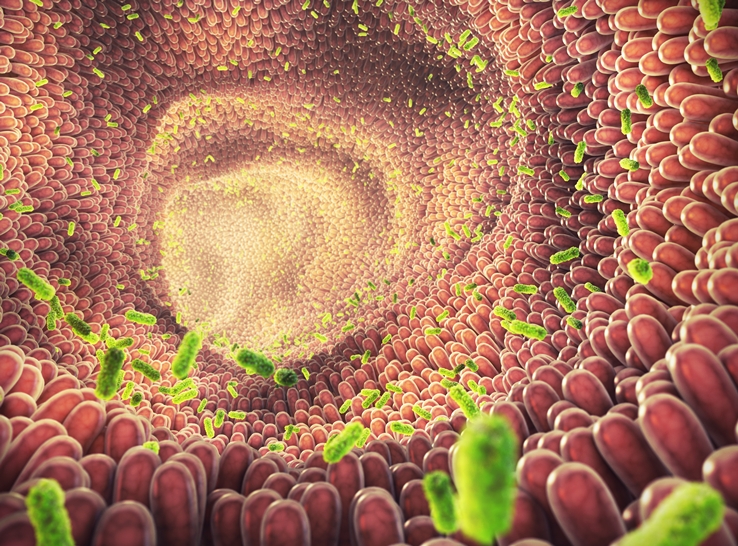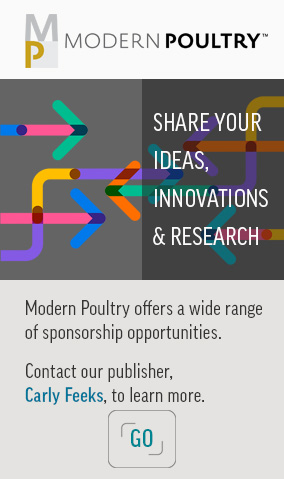The importance of maintaining good gut health is well-known in the poultry industry, but the gut’s microbiome and its role in health and performance remain a mystery.
The push to produce poultry without antibiotics has shone more light on the microbiome and the use of alternative modalities, such as probiotics, that can support the microbiome and promote performance.
Despite the widespread use of therapeutic alternatives in the poultry industry, many questions remain about the poultry gut microbiome and how best to manage it.
To address these questions, the Poultry Science Association hosted a webinar titled, “Microbiome mapping: The effects of diet, dietary feed additives, age and disease challenge on the microbiome of broilers and turkeys,” featuring poultry researcher and nutritionist Theresia Lavergne, PhD.*
Defining the microbiome
The microbiome is a dynamic, complex and highly variable environment that contains thousands of microorganisms, including bacteria, viruses and fungi.
“The microbiome plays a huge role in how we raise animals to keep birds healthy without antibiotics,” Lavergne said.
She noted that while the term “microbiome” is relatively new to the poultry and livestock industry, it was first used in the 1990s. It should not be confused with microbiota, the collection of microorganisms living within the microbiome.
The microorganisms inhabiting the microbiome interact with the host in commensal, symbiotic or pathogenic relationships. She explained that nearly 70% of gut microbial biomarkers cannot be cultured, , making DNA sequencing necessary to identify and quantify them.
The gut microbiome carries out numerous functions. One function is pathogen exclusion, in which good bacteria outcompete the pathogenic bacteria for resources and prevent their colonization.
Other functions include nutrient production, immune-system maturation and endocrine-system regulation.
Factors affecting the microbiome
Many external factors affect the gut microbiome. For example, age affects microbiota abundance and diversity. Lavergne explained that proteobacteria — a phylum or group of bacteria that includes Escherichia and Salmonella — are more abundant in the first few days of life. Firmicutes — a phylum or group of bacteria that live in the gut and play a significant role in flock health — are more abundant in older birds.
Diet, antibiotics and the environment also affect the microbiome. “Dietary nutrients, such as grains and fats, are nutrients for the microbiota and modulate their growth,” Lavergne explained.
She added that antibiotics do not discriminate between good and bad bacteria, often warranting the administration of Lactobacillus after antibiotic therapy to recolonize the gut with good bacteria.
Lavergne also noted that pests and rodents within the environment can introduce pathogens and negatively affect the microbiome. Reused litter can also introduce pathogens and should be treated between cycles. In addition, people are a significant source of the spread of disease and pathogens through flocks, necessitating strict biosecurity protocols.
Lavergne discussed the many feed additives that promote good gut health by directly and indirectly impacting the microbiome.
Among these additives are the “biotics” — prebiotics, probiotics, postbiotics and phytobiotics.
Prebiotics are compounds which feed beneficial bacteria.
Probiotics (“good bacteria”) produce metabolites such as short chain fatty acids, which the host can utilize and bacteriocins which can inhibit the growth of harmful bacteria.
Postbiotics are the end products of good bacteria metabolism and can nourish or stimulate other beneficial members of the microbiota.
Phytobiotics, such as herbs and essential oils, are plant-based and contain bioactive compounds to promote good gut health.
Bacteriophages — a virus that parasitizes a bacterium by infecting it and reproducing inside it — are a newer technology. They are designed to target specific pathogenic bacteria, destroying them by rupturing the cell wall or membrane.
Enzymes indirectly affect the gut microbiome. They break down hard-to-digest complex carbohydrates and proteins, freeing up nutrients that the host animal or the microbiota can use.
The effect of age and postbiotics
Lavergne discussed several trials conducted over the past year and a half that investigated how various treatments and challenges affect the gut microbiome in broilers and turkeys.
One trial investigated the effect of age and postbiotics in Ross 308 male broilers reared on used litter. Investigators evaluated the F/B ratio — that is, the ratio of Firmicutes to Bacteroides, a genus of gram-negative, non-spore-forming, obligately anaerobic, rod-shaped bacteria —to estimate the degree of eubiosis or microbial balance within the body.
They also looked at the microbiota’s richness, which indicates the total number of bacterial genera in the microbiota, and diversity, which describes how many different genera are present.
The F/B ratio was unexpectedly high in each group early in the study, indicating dysbiosis — an imbalance between the types of bacteria present in a bird’s natural microflora, especially that of the gut, which may contribute to a range of health conditions. The ratio decreased with age, suggesting a restoration of eubiosis or microbial balance as the birds got older. Notably, the ratio was smaller with postbiotic treatment than no treatment.
Postbiotic treatment also resulted in higher microbiota richness and diversity, as well as a greater abundance of good bacteria, demonstrating the postbiotic’s positive effects on the gut microbiome.
Coccidiosis challenge study in broilers
Another broiler study investigated the effects of postbiotics and a coccidiostat on the gut microbiome with a live-coccidiosis vaccine challenge. Investigators evaluated microbiota richness and diversity, oocyst (coccidia egg) count and the flock’s feed-conversion ratio (FCR).
Lactobacillus was abundant in all groups, Lavergne reported, which underscores the importance of looking more deeply at the entire microbiota in context, especially richness and diversity, rather than focusing on a single bacterium to assess gut health.
Microbiota richness varied between the challenged and unchallenged groups and between the challenged groups. Notably, among challenged groups, microbiota richness was considerably less with coccidiostat treatment.
Unsurprisingly, the postbiotic did not reduce oocyst count. However, it shifted the microbiome toward more favorable bacteria, positively affecting the FCR.
Combining feed additives
A third study in broilers evaluated several combinations of feed additives, compared with a coccidiostat and no additive.
A combination of a prebiotic, postbiotic and saponin — a plant-derived organic compound — resulted in the lowest F/B ratio and highest microbiota richness among all study groups.
“This study’s results demonstrated the usefulness of determining which combination of feed additives can be most beneficial to the gut microbiome in specific situations,” Lavergne said.
Histomonas challenge in turkey poults
A study in turkey poults evaluated the effect of postbiotic treatment on the gut microbiome with a challenge by the protozoal parasite, Histomonas.
Before the challenge, postbiotic treatment resulted in significantly higher bodyweight, average bodyweight gain and a greater abundance of good bacteria than that observed in the challenged group receiving no feed additive.
After the challenge, though, these groups’ bodyweights and average weight gains were statistically similar.
Despite the lack of statistically significant improvement with postbiotic treatment after challenge, Lavergne concluded, “Feeding a postbiotic can help a turkey poult overcome a challenge and maintain some weight gain by shifting the microbiome toward more favorable bacteria.”
Audience questions
A webinar attendee posed a question regarding a holistic approach to studying the microbiota and their metabolites. Lavergne agreed on the importance of a holistic approach. However, with nearly 26,000 microorganisms in the gut microbiome, she recommended determining which specific positive and negative biomarkers have the most effect on growth performance and health and use sequencing to identify those in the microbiome, even though they may be some of the lesser abundant genera.
Lavergne advocated for disease-challenge studies when asked which studies would have the most practical impact in filling the knowledge gap on the poultry gut microbiome. The studies, she explained, mimic what’s going on in the field and can help producers make educated decisions on which feed additives to use and when.
*Lavergne is a senior technical service manager at Natural Biologics, Inc.







